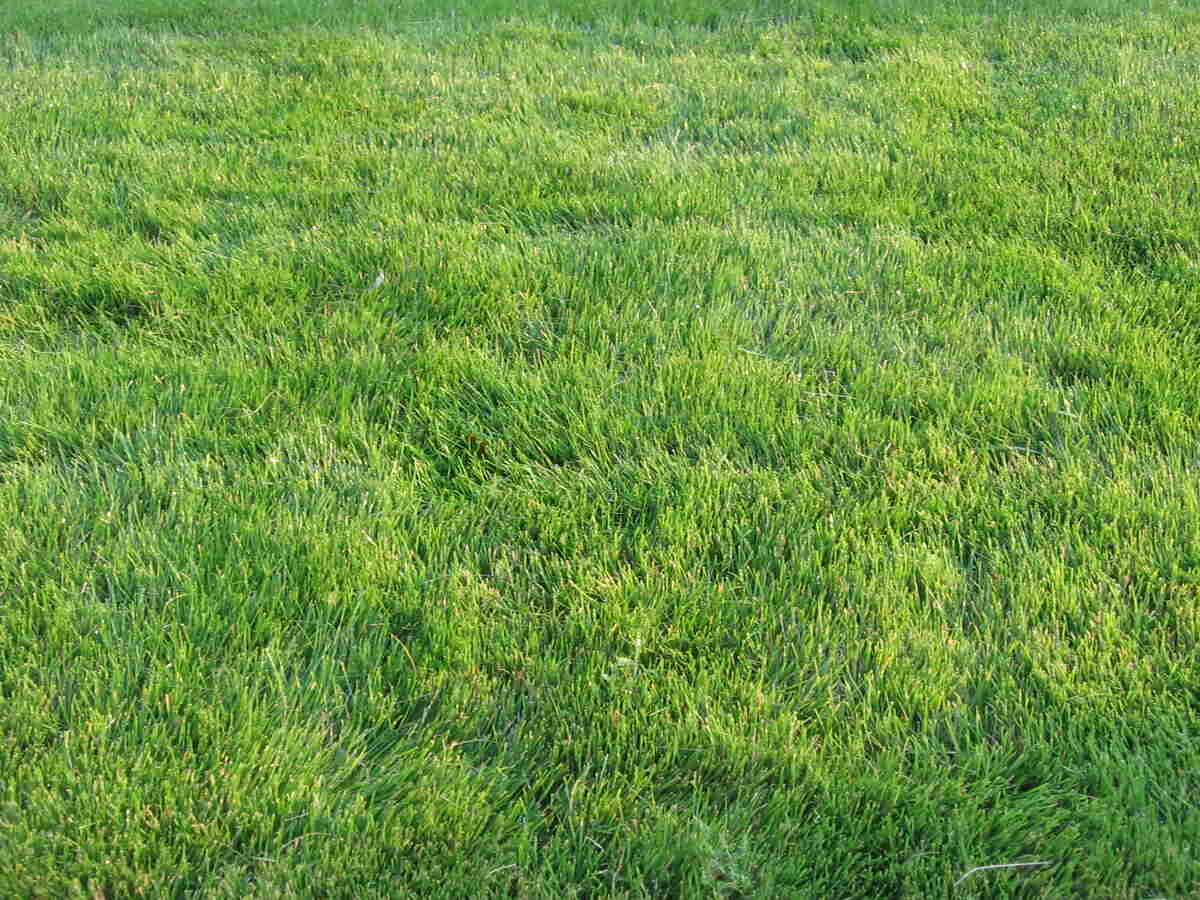
There are many great options for lawn grass in the Baltimore area, but the five best grass types for Baltimore stand out. Grasses that thrive in the northeastern part of the country need to be rather tolerant of cold winters as well as moderate summers. Shade tolerance, maintenance, and foot traffic tolerance are all things to consider when choosing a grass type for your Baltimore lawn.
These Maryland grass types have different pros and cons, but the following varieties are the best choice to use for your lawn in the Baltimore, Md. area.
1. Tall Fescue
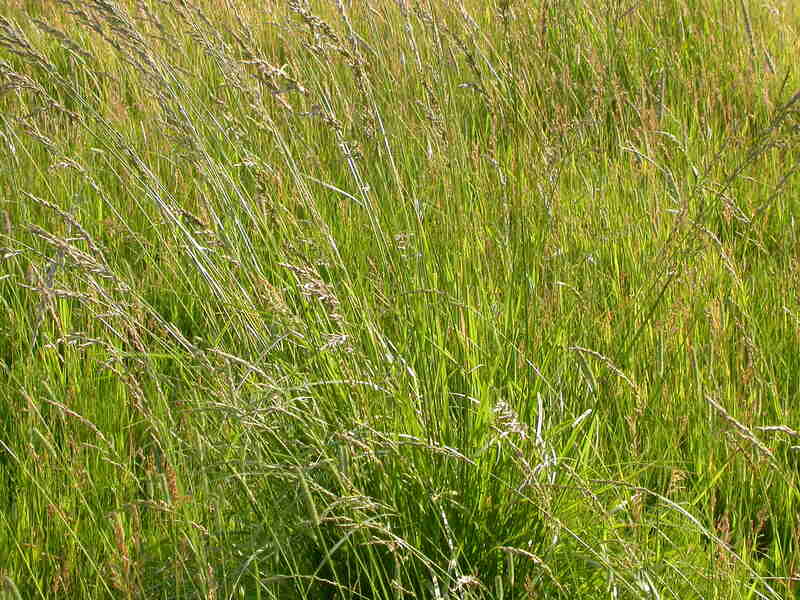
Photo Credit: Matt Lavin / Flickr / CC BY-SA 2.0
This cool-season grass is the best choice if you want a long-lasting green lawn. It turns green in early spring and is usually the last lawn to turn brown in late fall. Tall fescue is a turf-type grass species that is very durable and can withstand moderate foot traffic. It usually grows in clusters, so overseeding may be necessary to keep a level and dense lawn.
Tall fescue is disease resistant, can withstand cold winters, and does well in mild summers. Like all cool-season grasses, it grows the most during the spring and fall seasons. Tall fescue is also great for saving water since it requires 25% less water than Zoysiagrass to stay green. However, you should expect a tall fescue lawn to turn brown and dormant during the summer.
- Classification: Cool-season grass
- Spreads by: Bunch-type grass
- Shade Tolerance: Moderate; direct sunlight is preferable
- Drought Tolerance: Moderate
- Foot Traffic Tolerance: Moderate; needs overseeding if bare spots appear
- Maintenance Needs: Low to moderate; regular mowing
- Mowing Height: 2.5 to 3.5 inches
- Potential for Disease: Low
Grass Seed Options:
– Triple-Play Tall Fescue Grass Seed Blend (5000 sq ft)
– Eretz Kentucky 31 K31 Tall Fescue Grass Seed (choose your size)
– Pennington The Rebels Tall Fescue Grass Seed Mix (7 lb.)
2. Fine Fescue
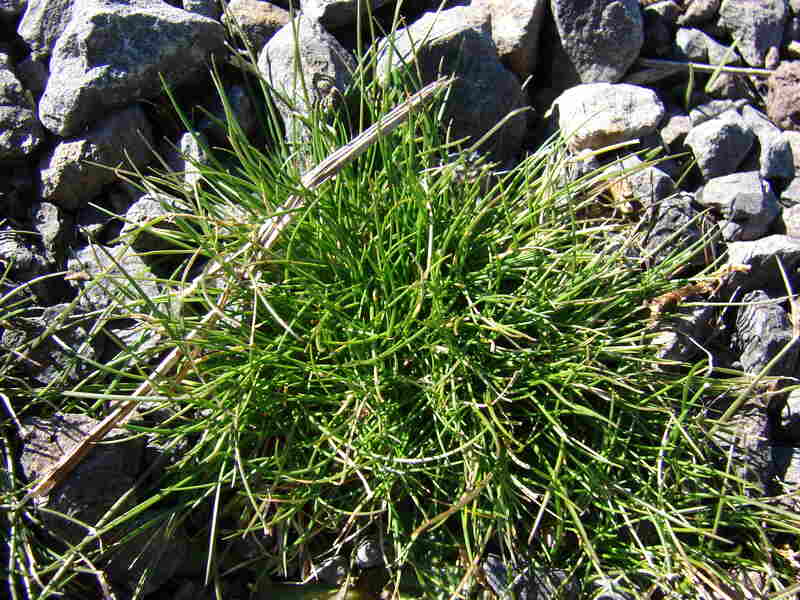
Photo Credit: Forest and Kim Starr / Flickr / CC BY 2.0
Fine fescue is an excellent choice if your lawn receives more shade, as it tolerates shade better than other grass varieties. This group of cool-season grasses features very fine leaves and germinates rapidly. Fine fescue is considered a turf grass in that it does well in covering a lawn when added as part of a seed mix.
Fine fescue has the capability to remain green all year long if maintained correctly and is resistant to drought. It requires little maintenance and doesn’t need to be fertilized. Fine fescue can also do well in poor soil conditions. This grass species is also used for overseeding winter lawns that have gone dormant.
- Classification: Cool-season grass
- Spreads by: Bunch-type or rhizomes depending on the variety
- Shade Tolerance: Moderate to high
- Drought Tolerance: High
- Foot Traffic Tolerance: Low
- Maintenance Needs: Low
- Mowing Height: 3 to 4 inches
- Potential for Disease: Moderate; chance of snow mold and red thread
Grass Seed Options:
– Outsidepride Legacy Fine Fescue Grass Seed (5 lbs.)
– Eretz Creeping Red Fine Fescue Seed (choose your size)
– Outsidepride Creeping Red Fine Fescue Grass Seed (25 lbs.)
– Outsidepride Hard Fine Fescue Grass Seed (10 lbs.)
3. Kentucky Bluegrass
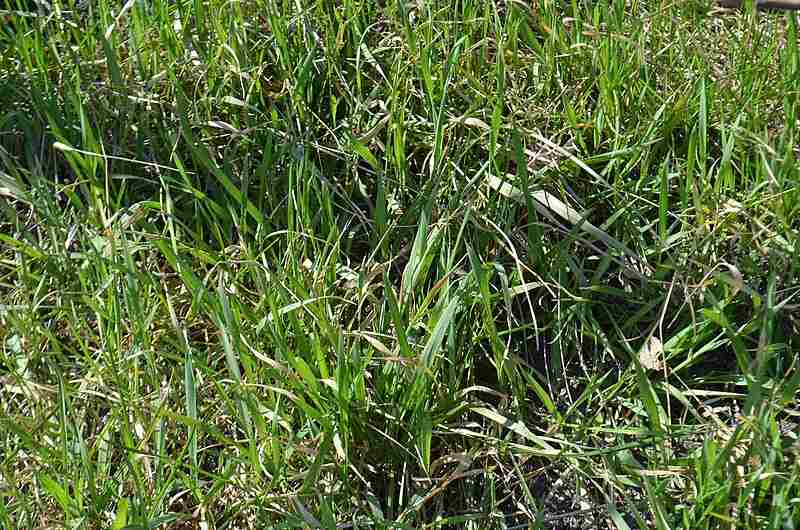
Photo Credit: Ethan2039 / Wikimedia Commons / CC BY-SA 4.0
Kentucky bluegrass is a cool-season grass that grows well in northern U.S. lawns. This popular grass species is known for its durability and beauty.
Kentucky bluegrass can survive long, cold winters and enjoys a mild to hot summer. It can struggle with drought and may require extra water during the summer to keep shallow roots moist.
- Classification: Cool-season grass
- Spreads by: Rhizomes
- Shade tolerance: Moderate; does best in full sun
- Drought tolerance: Moderate; may require extra watering in the summer
- Foot traffic tolerance: High
- Maintenance needs: High
- Mowing height: 2.5 to 3 inches
- Potential for disease: Moderate to high depending on the variety; rust, dollar spot, brown patch
Grass Seed Options:
– Jonathan Green (11970) Blue Panther Kentucky Bluegrass Grass Seed (3 lbs.)
– SeedRanch Midnight Kentucky Bluegrass Seed (5 lbs.)
– Jacklin Seed – Biltmore Blue Blend – 100% Kentucky Bluegrass (5 lbs.)
4. Perennial Ryegrass
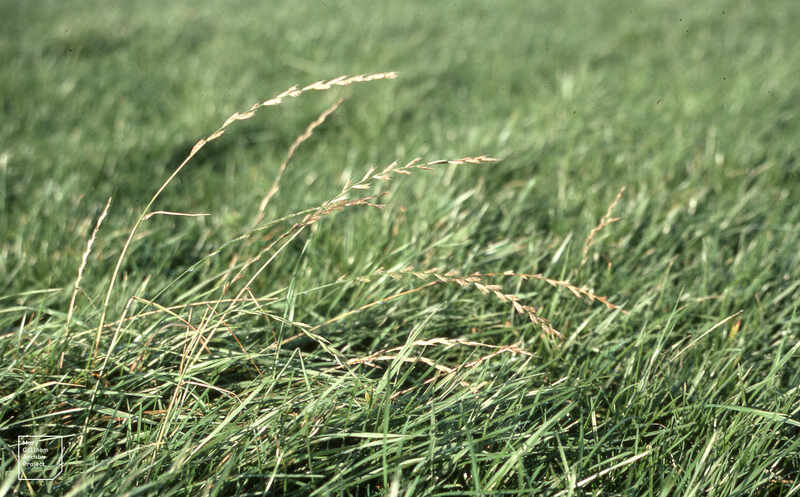
Photo Credit: Dr Mary Gillham Archive Project / Flickr / CC BY 2.0
Perennial ryegrass is a cool-season grass that is widely used throughout the country. It is a tough grass that establishes quickly with a fast germination rate. Perennial ryegrass has great cold tolerance and can also stand up to heat, depending on the variety. This grass is also sometimes seeded as part of a mix to help resist disease and add genetic diversity to your lawn.
The turf-type variety of perennial ryegrass will do best in creating a beautiful lawn that comes back year after year. It grows best in cooler seasons from fall to spring and does well in the moderate Baltimore summers. Although this variety germinates quickly, it spreads slowly once planted. Overseeding may be needed to prevent perennial ryegrass from bunching.
- Classification: Cool-season grass
- Spreads by: Bunch-type grass
- Shade tolerance: Low; thrives in full sun
- Drought tolerance: Moderate (variety depending); will go dormant during drought
- Foot traffic tolerance: High
- Maintenance needs: Low; frequent mowing
- Mowing height: 2.5 to 3 inches
- Potential for disease: High
Grass Seed Options:
– Outsidepride Perennial Ryegrass Seed (5 lbs.)
– Eretz ProTurf Perennial Ryegrass Fine Lawn Seed (choose your size)
5. Zoysiagrass
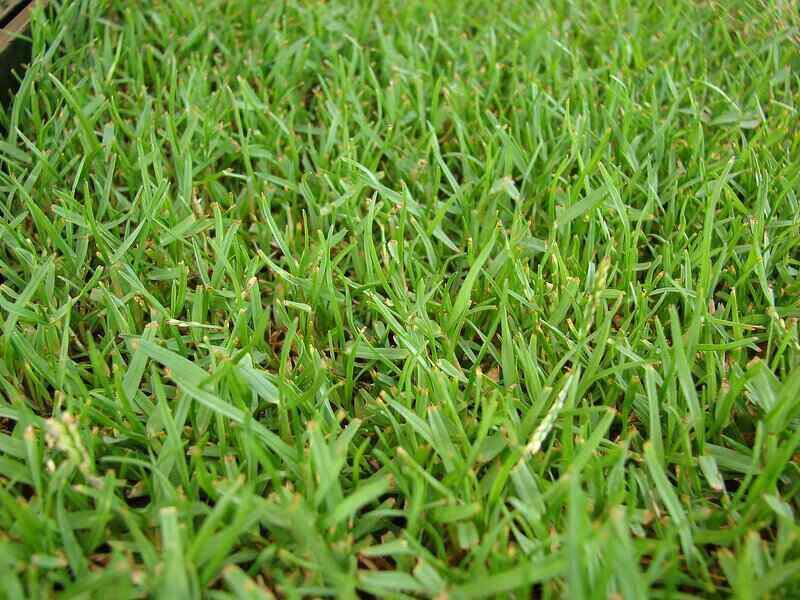
Photo Credit: Forest and Kim Starr / Wikimedia Commons / CC BY 3.0 US
Zoysiagrass is the most cold-tolerant of the warm-season grasses (and the only warm-season grass on our list). This grass is widely used in home lawns due to its drought, shade, and traffic tolerance (soccer, anyone?). Even though Zoysia is a great all-around grass, know that Maryland sits in the transition zone, meaning no grass will thrive here 100% of the time.
Mid-May and into June is the best time to plant Zoysiagrass, usually through plugs or sod since this grass is a slow grower. It may take two to three years to establish, but once established, you will have a dense lawn that crowds out weeds and looks beautiful. Typically, only one fertilizer application per year (in June) is needed to keep Zoysiagrass healthy and green.
- Classification: Warm-season grass
- Spreads by: Stolons and rhizomes
- Shade Tolerance: Moderate, variety depending
- Drought Tolerance: Moderate to high; may turn brown
- Foot Traffic Tolerance: High
- Maintenance Needs: Low to moderate; certain varieties require more maintenance
- Mowing Height: 0.5 to 1 inch; up to 1.5 inches in fall and winter
- Potential for Disease: Low
Grass Plug and Seed Options:
– Zoysia Plugs (50 Large Grass Plugs)
– Zoysia Plugs (50 Full & Lush Grass Plugs)
– Zoysia Plugs (100 Plugs)
– Zoysia Emerald Grass Seeds (1/8 lb. of seeds)
– Zenith Zenith Grass Seeds (1/8 lb. of seeds)
How to Choose the Best Grass for Your Baltimore Lawn
You now know the five best lawn grass types for Baltimore, but how do you know which one is the best fit for your yard? Deciding on a grass is simple when you consider the following:
Maintenance
How much time are you willing to dedicate solely to your grass? Consider Kentucky bluegrass if you’re willing to go the extra mile for your lawn. If you’d rather not worry so much about yard work, fine fescue might be more your speed.
- High-maintenance: Kentucky bluegrass
- Low-maintenance: Perennial ryegrass, fine fescue, Zoysiagrass (low to moderate), and tall fescue (low to moderate)
Shade
Like with maintenance, how much shade your yard gets is something to consider before you settle on a grass type.
- High shade tolerance: Fine fescue
- Moderate shade tolerance: Kentucky bluegrass, tall fescue, Zoysiagrass
- Low shade tolerance: Perennial ryegrass
Foot-Traffic
If you’re someone who loves to fill the summertime with activities and parties, you need to think about the traffic tolerance of your grass type.
- High-tolerance: Kentucky bluegrass, perennial ryegrass, Zoysiagrass
- Moderate-tolerance: Tall fescue
- Low-tolerance: Fine fescue
Leave it to the Pros
Often, choosing the best grass seed for your Maryland lawn is just the tip of the iceberg. You’ll need to consider planting, irrigation, fertilization, and general lawn care. For help picking out a grass type or taking care of your new green-and-growing lawn, talk to a Baltimore lawn care professional.
LawnStarter participates in the Amazon Services LLC Associates Program, an affiliate advertising program. LawnStarter earns revenue from products promoted in this article.
Main Image Credit: Russbach / Wikimedia Commons / CC BY-SA 3.0